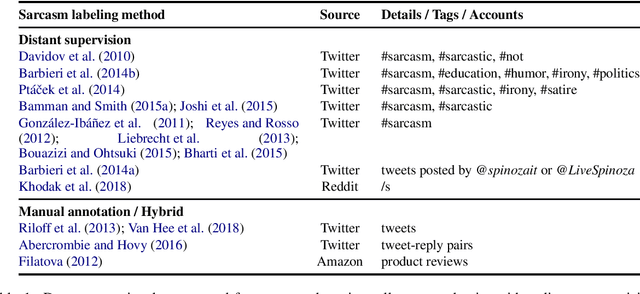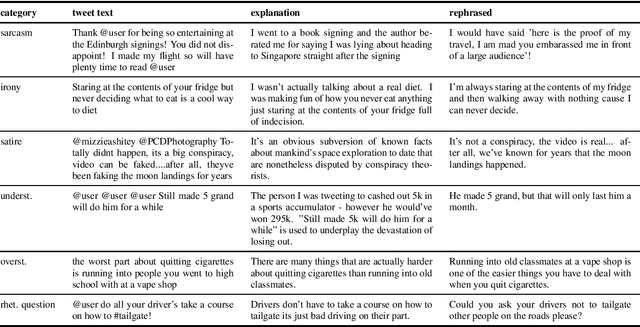iSarcasm: A Dataset of Intended Sarcasm
Paper and Code
Nov 08, 2019



This paper considers the distinction between intended and perceived sarcasm in the context of textual sarcasm detection. The former occurs when an utterance is sarcastic from the perspective of its author, while the latter occurs when the utterance is interpreted as sarcastic by the audience. We show the limitations of previous labelling methods in capturing intended sarcasm and introduce the iSarcasm dataset of tweets labeled for sarcasm directly by their authors. We experiment with sarcasm detection models on our dataset. The low performance indicates that sarcasm might be a phenomenon under-studied computationally thus far.
* 10 pages
 Add to Chrome
Add to Chrome Add to Firefox
Add to Firefox Add to Edge
Add to Edge